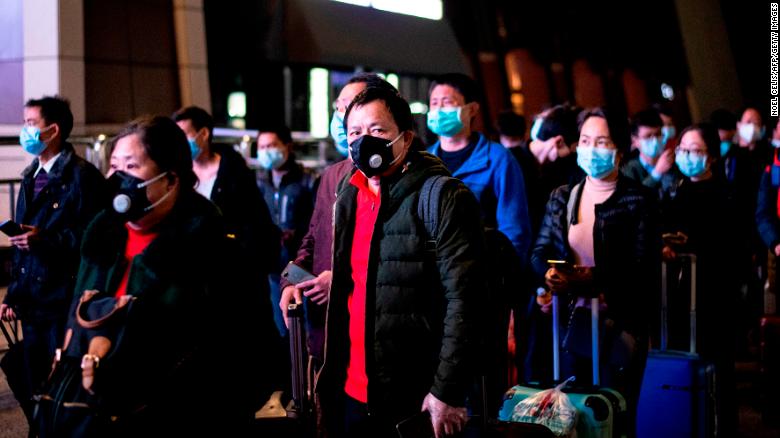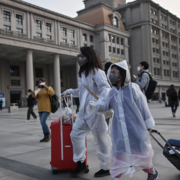Wuhan, China, the origin of the deadly COVID-19 coronavirus pandemic, is easing its lockdown on April 8, 2020, after 11 million residents have been quarantined for 76 days, but experts are cautious about the possibility of a second outbreak.
Some restrictions within the city will remain in place, and officials warn that the threat of further infections remains far from over.
Schools, including primary school and colleges, will not reopen yet, according to the Hubei Province government.

Passengers wear facemasks as they form a queue at the Wuhan Wuchang Railway Station in Wuhan, early on April 8, as they prepare to leave the city for the first time in more than ten weeks.
Authorities have warned Wuhan residents not to leave their province, city or neighborhood unless the travel is essential. Citizens should also wear masks when going to public places.
Additionally, people traveling from Wuhan to Beijing are required to go through two rounds of testing for the virus, while other cities and provinces require Wuhan travelers to undergo a 14-day quarantine.
Flights to Beijing and international locations have not yet been restored.
On Wednesday, more businesses are to reopen and all residents with green “health codes” and documents from their employers should be able to return to work.
City officials have worked to make an event of the city’s reopening, with a light show, social media campaigns led by state media, and special events to mark the reopening of the airports, stations and factories. Train and bus terminals were decorated with lights. Skyscrapers in the city centre were lit up with the words: “Hello, Wuhan”.

People stand near the Yangtze River in the city of Wuhan, on April 6. In recent weeks, officials have gradually eased some of the lockdown measures, allowing a limited number of residents to leave their residential compounds for a short time.
Many Chinese are fearful that loosening travel curbs may seed new infection clusters. On social media, the pervading reaction isn’t gratitude, but fear.
“Don’t unlock Wuhan until everyone is tested!” wrote one Weibo user. “Asymptomatic patients will spread [the disease] to the whole country!” wrote another. “I don’t intend to meet anyone who come out of Wuhan after Apr. 8.”
Many question China’s numbers in general—such as the report that there were no new COVID-19 deaths on Monday (the first such day since January). Suspicion has been created by China’s failure to include asymptomatic cases—which are also infectious—in official statistics until April 1.
New analysis by the American Enterprise Institute published Tuesday estimates China had 2.9 million COVID-19 cases instead of the 80,000 officially recorded.
Support Prague Morning!
We are proud to provide our readers from around the world with independent, and unbiased news for free.
Our dedicated team supports the local community, foreign residents and visitors of all nationalities through our website, social media and newsletter.
We appreciate that not everyone can afford to pay for our services but if you are able to, we ask you to support Prague Morning by making a contribution – no matter how small 🙂 .




